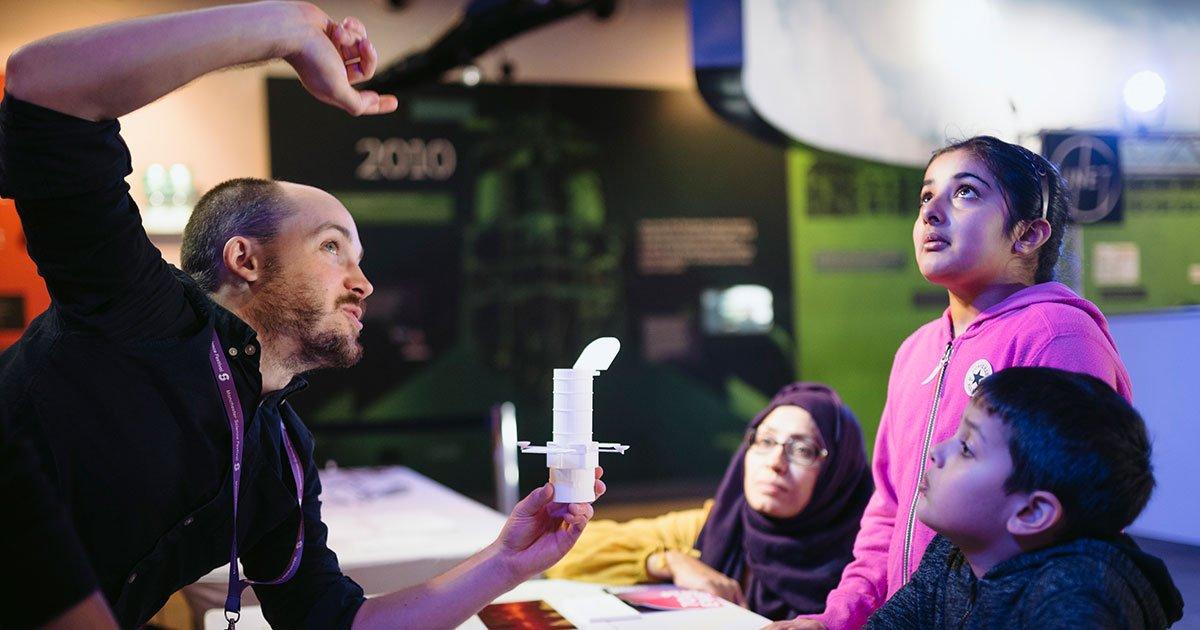Guide for teachers: Planning school visits to museums

Thinking about planning a trip to a museum for your class? Here are some quick tips on getting started – from plotting it into your curriculum plan, to reaching out to the museum.
Visits to museums are often a highlight of children’s school careers, remembered for years afterwards. Teachers use trips to introduce topics, consolidate learning at the end of schemes of work, or to support better retrieval for pupils by varying the types of learning.
Visiting a museum also helps to develop children’s confidence outside the school environment and a range of skills including behaviour and teamwork.
Integrate the visit into your curriculum planning
The first step when planning a visit is to think about how best you can integrate it into your curriculum plan. The best trips are where teachers have been able to link to pre- and post-visit work back at school.
Once you know what topics or skills you need a museum visit to cover, find a museum local to you that can offer this. You can use the Art Map to find local museums and find out more about their collections. Then head to the museums’ own websites to find out more about their schools offer.
Self-guided visit or session?
You’ll have the choice of a self-guided visit, where you direct what you want your pupils to look at and the activities they do, or a visit with a session delivered by the museum’s learning team.
If you would like a session, find out if the museum already has workshops on the topic you want or if they will work with you to build a tailored session for your school. If the museum has a collection on your topic, but no workshop, the learning team will often work with you to develop a bespoke workshop. If it’s a session you’re interested in, other schools will probably also be interested, so it’s in the museum’s interest to create a new session.
Object-based learning pedagogy
Museums use object-based learning. If you want to learn more about the pedagogy behind this, as well as key things to think about when planning a museum visit, there are online guides and courses available. The University of Glasgow offers a Future Learn course on the museum as a site of learning. The Science Museum has several online films about planning a visit and making the most of museums.
Contacting the museum
Once you’ve found your museum and identified the type of visit you want, now is the time to book. Approaching the museum with several dates can be useful or booking the visit eight to 12 months in advance. Museums that offer school visits will be well versed on your needs and what they can accommodate. For example, can the museum take a whole year group at once? Where will your group eat lunch? If you are arriving by coach, where is the best place to be dropped off? And so on.
The museum will have visit requirements relating to the adult-child ratio which are probably similar to your safeguarding policy requirements. Often museums require a ratio of 1 adult to 15 children at Secondary, and 1 adult to 10 children at Primary. They will probably also have a pro-forma risk assessment that you can adapt as part of your visit planning.
Examples of school visits
If you are considering a school visit, do explore what your local museum can offer you. Working with a local museum will often mean a much more bespoke offer.
Below I’ve mentioned just a few of the many museums that offer well thought out and exciting visits for schools. There are many more to discover.
Leeds Museums and Galleries
Inspiring workshops at nine venues on a broad range of subjects, across all key stages, with strong linked support for teacher CPD and curriculum planning.
National Museum Cardiff
Workshops covering dinosaurs, natural history, art and early life in Wales in their excellent learning spaces.
Tyne and Wear Archives and Museums
School visits across nine museums including a Roman fort, a steam railway and galleries.
At the Great North Museum: Hancock you can have hands-on workshops with museum staff, planetarium shows for all ages, plus teacher-led time to explore the galleries. Primary schools can have story time alongside the array of animals in Living Planet, or explore a topic like Ancient Egypt in more depth. Secondary schools can book a cross-curricular enrichment day for a whole year group, while sixth form could meet a curator or have a Q&A on careers.
National Galleries Scotland
You can explore historic, modern and contemporary art at the National Galleries Scotland sites. Gallery visits align closely with the Scottish Curriculum for Excellence to nurture creativity, develop skills and deepen understanding of culture in Scotland and the world.
Design Museum, London
Supporting the National Curriculum for Design and Technology and tailored for key stages 2 to 5, the Design Museum offers students and educators design-education facilities and workshops with a programme connected to the wider ecology of design practice, networks and communities.
The Fitzwilliam Museum, Cambridge
A wide range of school workshops, resources for self-guided visits and support for GCSE Art students to visit the museum and do exam research.